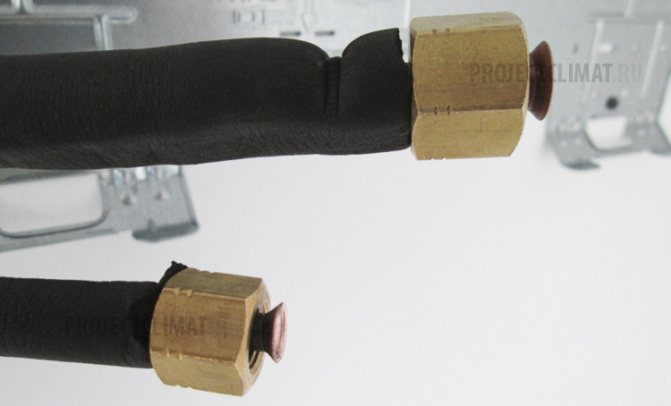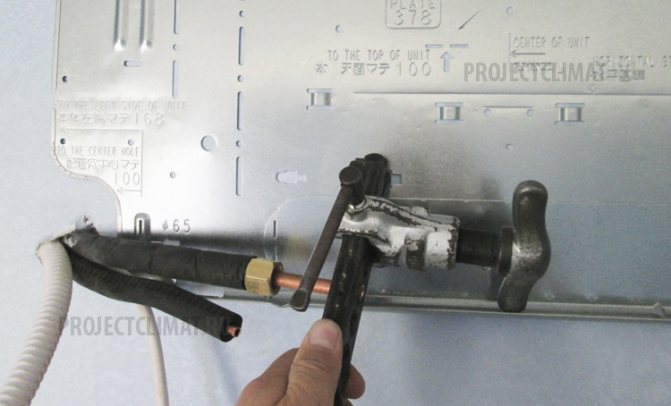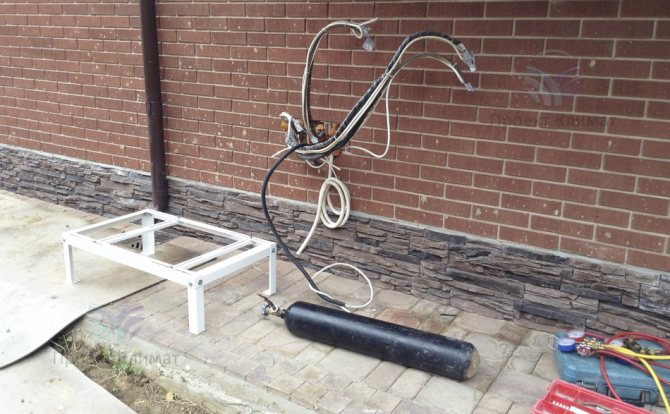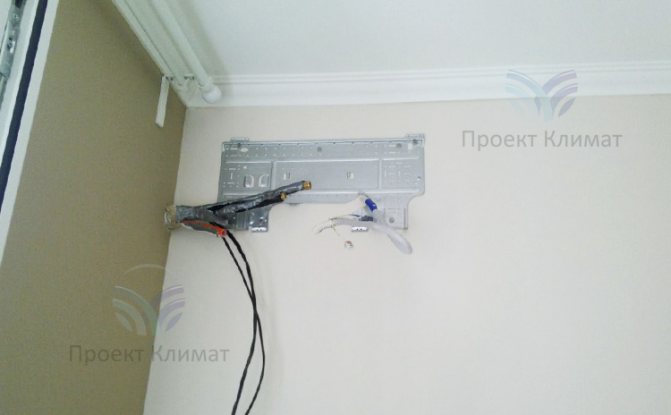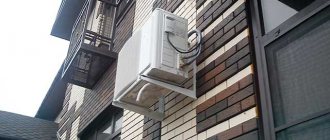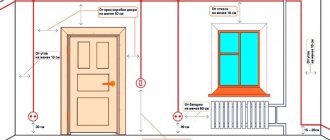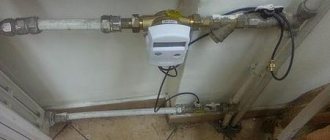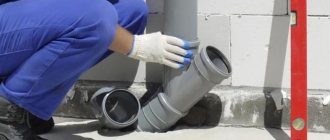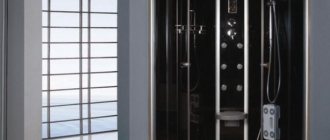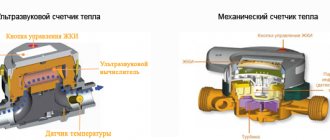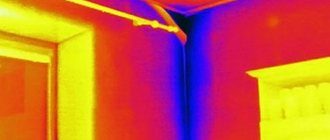What is important to know about installing an air conditioner
The split system consists of an external unit installed from the street side and an internal unit, which is installed directly in the room. Electrical and freon communications are laid between the blocks. The connection is carried out by qualified specialists using a special tool in their work.
When installing the indoor unit of a split system, it is important to ensure free air circulation in the room, without any obstacles to the cooled air flow.
The outdoor unit must be protected from various influences that can damage the device: heavy rain, falling icicles or snow avalanches from the roof. The structure is mounted on the outside of the building using high-quality fasteners. It is advisable to install the device on the shady side, under a window with an opening sash, which will provide convenience for maintenance.
There are also floor-standing and window-type monoblock air conditioners. The design is extremely simple, all working components are immersed in one housing.
It is forbidden to mount external air conditioner units on glazed balconies that prevent heat from escaping, as well as close to the ground, next to trees and gas utilities.
When installing the air conditioner, be sure to take into account the condensate drainage. Do not allow water to hit the wall. The installed sewage system, which can also be included in the equipment installation project, will allow to exclude such wetting.
Installing air conditioners on the old track
The problem of replacing an air conditioner on an existing route arises when the air conditioner itself breaks down and a desire to save money by preserving the existing communications or physical impossibility to dismantle the route in the event of laying pipelines in the wall or under the ceiling. But the desire to replace the air conditioner without replacing the track is not enough.
There are 4 factors to consider:
- Incompatibility of the oils used
... Outdated models used R22 freon with mineral oil, which is incompatible with the oils contained in R410 freon. And if this fact is not taken into account, then the properties of the oil may change, which will lead to a malfunction of the air conditioning compressor. It's like with oil in a car, only the split system is an order of magnitude more sensitive. - Electrical connection diagram
... As a rule, an electric cable is also laid with the route, both power supply and control between the indoor and outdoor units. For air conditioners without an inverter, power is supplied to the indoor unit. If the air conditioner is with an inverter - to an external one. - Refrigerant pipe diameter
... Each air conditioner is characterized by a cross-section of copper pipes through which freon flows. It happens that split systems of the same capacity from different manufacturers require different copper pipes. In small models up to 5 kW. use copper pipes with a cross section of 1/4 ″ / 3/8 ″ (liquid / gas), on models up to 8-9 kW. 1/4 ″ / 1/2 ″ (liquid / gas), and on more powerful 3/8 ″ / 5/8 ″ (liquid / gas). But there are exceptions: according to the air conditioner model, we can definitely determine the type of connection. - Reason for replacement
... The most unpleasant moment: if a compressor burns out on the freon line, then the entire route is clogged with flakes of burnt oil. It is unambiguously required either to flush the split-system route, or to dismantle and replace it.
Despite the seeming complexity, it is possible and necessary to solve the problem of installing an air conditioner on an existing route, because this way you will save the amount required to dismantle the old air conditioner, dismantle the route from the previous model and lay a new route, which is almost two times the cost of a standard installation.
Often, pre-dismantled equipment is installed on the existing route, after the air conditioner has been repaired.
Requirements for the location of the air conditioner
The location of the air conditioner affects the efficiency and durability of the air conditioner. There are some requirements for the installation of split equipment, which must be taken into account during installation work.
Basic installation rules:
- There must be at least 15 cm of void space between the ceiling and the indoor unit.
- There must be a distance of at least 10 cm between the nearest vertical surface.
- The indoor unit must not be installed under shelves, cabinets and other vertical surfaces, or above appliances that generate heat.
- The indoor unit of the split system must not be exposed to direct sunlight.
- Strong bending of the freon tubes connecting the external and internal unit is not allowed.
Helpful hints:
- It is advisable to find a convenient place for installing the air conditioner so that it is as accessible as possible for maintenance.
- Try not to create a long route of communication systems between the indoor and outdoor unit, which will require refueling with freon.
- It is better to install the air conditioner at the stage of repair work.
- It is undesirable to install a cooling device opposite the entrance to the room.
Where is the best place to install an air conditioner in an apartment
It is very important to find the right place to install the air conditioner in the living space. It should create a pleasant coolness for residents, without causing hypothermia of the body with the development of colds. Consider different options for installing a split system in apartments.
One room apartment
In a 1-room apartment, you can install a multi-system with two indoor units and one outdoor unit, or several air conditioners with separate installation in each room.
Another good option is to install a duct system using low-pressure equipment. The only caveat is the more expensive installation, which has some features.
An economical option for a 1-room apartment is the installation of a wall-mounted split system, covering the entire area of the internal space with air flows. But it should be understood that in the room where the equipment will be installed, the temperature regime will always differ from the air temperature in other rooms.
Two-roomed flat
In two-room apartments, it is best to install an air conditioner in the largest room in terms of area. This will ensure that the cooled air is evenly distributed to other rooms in the apartment.
Before choosing a place for installing an air conditioner in a 2-room apartment, carefully study the layout of the rooms. The best place to install will be the room that is directly connected to other rooms in the apartment. And also consider the need to direct the air flow from the air conditioner to the doorways of adjacent rooms.
When to Install an Air Conditioner: Practical Tips
Features of installing an air conditioner in a room
An improperly installed air conditioner can cause frequent colds. To create a comfortable microclimate in the house, choose the right place for installing split equipment.
Do not install an air conditioner:
- over heating equipment;
- opposite a sleeping or workplace;
- on an uneven or fragile wall;
- in places where there is an obstacle to the free circulation of air.
Now let's consider the options for the location of the split system in different rooms.
Bedroom
If a bedroom is chosen for the installation of climatic equipment, you need to think over a place for installation so that the flow of cooled air does not fall on the resting people, but passes next to the bed, providing a pleasant coolness in the room.
If the room is small and there are practically no options for installation, choose an air conditioner with a multidirectional air flow, which allows you to independently adjust the direction of the outgoing flow.
Living room
In the living room, the air conditioner should be installed according to a similar principle: the cold air flow should not be directed at people, which means that when installing, the location of the furniture must be taken into account.
Optimal places for installing a split system:
- on the wall to the right or left of the upholstered furniture;
- above the front door;
- near the window opening.
In order for the air conditioner to harmoniously fit into the interior of the living room, it is recommended to choose a model that matches the color or design of the overall design concept of the living space.
Kitchen
You can install an air conditioner in the kitchen, but not next to the gas equipment and the stove. For this room, special models should be selected that can cope not only with their main function.
The work of a split system in the kitchen is often complicated by such nuances: high humidity in the room, a high content of fats and soot in the air, as well as different odors during cooking, which often require opening windows to eliminate them. Do not use the air conditioner as a cooker hood, this appliance is not designed for such work.
An air conditioner in an apartment or in a private house is an excellent solution for creating a pleasant microclimate in the living space on hot days. The main thing is to choose the right place for its installation, weighing the pros and cons of each option.
How to buy the perfect conditioner - 5 steps
So that the purchase of a split system does not bring disappointment, I recommend following a step-by-step algorithm. Before purchasing a household air conditioner, you need to pay attention to the fundamental parameters.
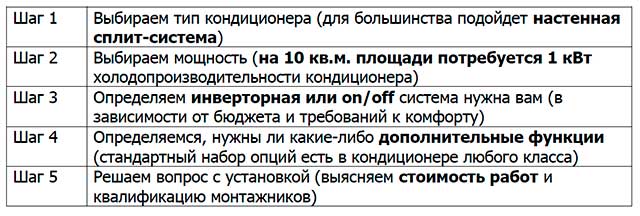
Step 1. Selecting the type of air conditioner
Modern household air conditioners are available in several types:

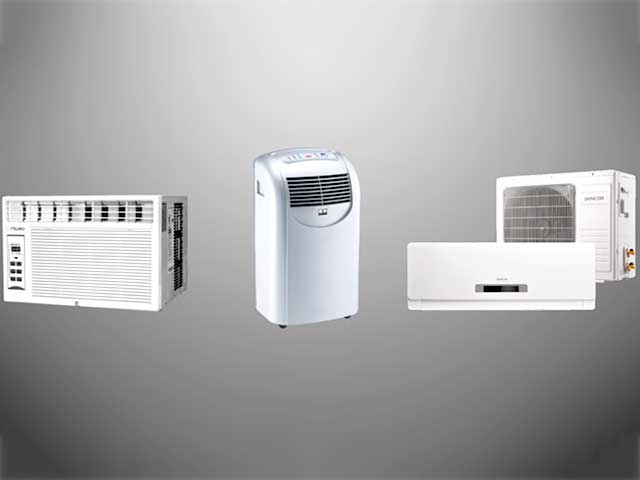
Window. This option is installed in the window opening, but is now obsolete. Installation of such a device is cheaper, but the appearance of the room takes on an industrial shade, they are practically not installed in apartments.- Wall split system. It has small dimensions, almost does not make noise. Best suited for apartment installations. Models of the middle and luxury price segment offer advanced functionality, remote control.
- Multi split system. Advanced air conditioners with several work units located in different rooms. The option is suitable in cases where there are no places on the outer wall of the house for the location of several outdoor units. Read more about them here.
- Mobile. Low power air conditioners that can be moved around the rooms. Such a device will not be able to cool the entire apartment, but it copes with the creation of climatic conditions in a small area. Suitable for rented apartments or summer cottages.
Depending on the characteristics of the premises and the needs of the owners, the type of climatic equipment is selected. In most cases, a traditional wall split system is suitable for apartments and houses. Read more about their benefits in a separate article.
Step 2. Determination of power
Buying a split system of insufficient power will lead to poor-quality cooling of the room and a quick breakdown of the device. Sufficient power for one room is calculated by several factors:

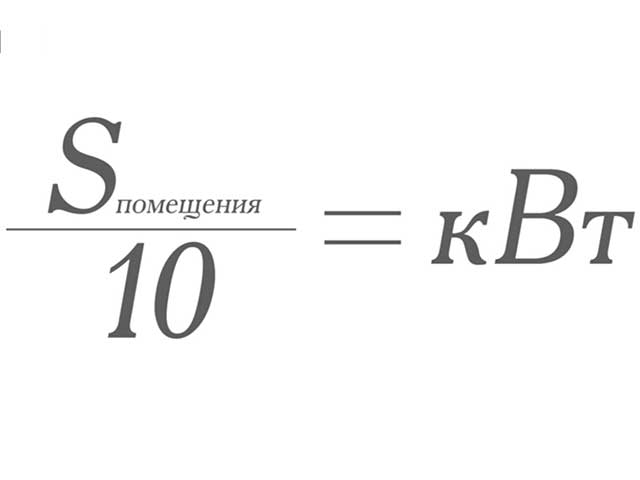
1 kW of split power for every 10 sq. M. room area... It is important to distinguish between the cooling capacity (which we are interested in now) and the consumption power. Read more about these indicators here;- 0.1 kW additionally calculated for each person who is constantly in the room;
- Additionally, the height of the ceilings (if they are higher than 3 meters), the heating of the room from the sun's rays are taken into account.
To correctly "guess" with the required power, it is recommended to consult with sellers in a split-system store or installation specialists. The more powerful the air conditioner, the more expensive it costs, so there is no need to purchase the most powerful models if you can save money. You can accurately calculate the power using the calculator on the website (in the right column or at the bottom of the page). You will learn all the nuances of choosing the power of the "Conder" from this article.
Step 3. Economical models
Air conditioners use different amounts of electricity. Now there are two types of devices - traditional (on / off) and inverter air conditioners... Modern on / off "splits" are quite economical in energy consumption. But some models have a so-called inverter temperature control system, consuming less electricity due to the "smooth" operation of the compressor.
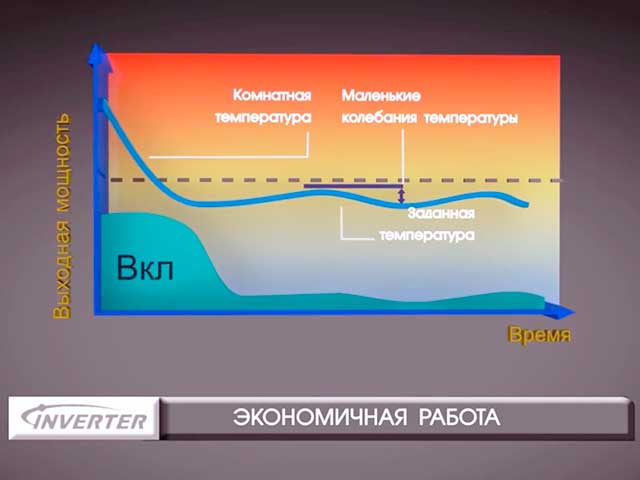

Most owners of split systems have a limited budget and do not want to overpay simultaneously for the device and for the subsequent energy consumption. For this reason, I recommend inverter models if:
- live in warm regions of the country (Krasnodar Territory, Rostov Region, etc.);
- plan to use the air conditioner for more than 3 months a year;
- are willing to pay 30-40% more money for a quieter and more comfortable air conditioner.
Read more about the "inverter" here.
Step 4. Selection of functionality
Almost all modern models have 5 modes: cooling, heating, drying, fan, auto. The standard feature set includes:

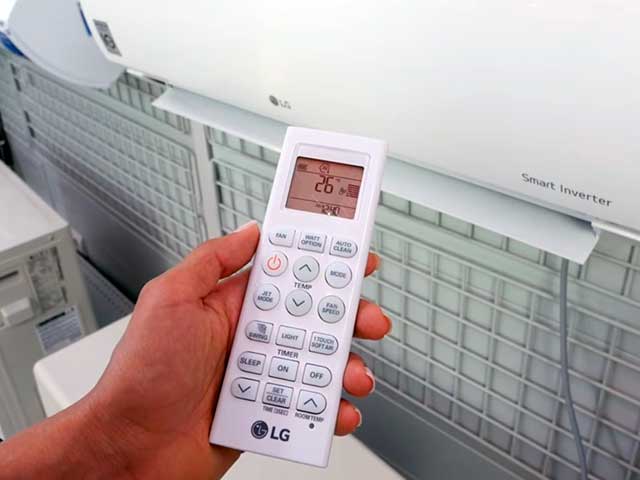
turbo mode;- sleeping mode;
- blinds tilt adjustment;
- regulation of the fan speed of the indoor unit;
- timer.
Higher-end models offer additional "features". They make the operation more enjoyable, but do not affect the basic functions. "Comfort" options increase the cost of the air conditioner:
- remote control using a telephone;
- air ionization;
- self-cleaning function;
- temperature sensors to search for people in the room and start the climate program;
- silent operation mode;
- other functions.
Models with advanced functionality are found in the middle and luxury price segments. Less common are models with additional economy-class functions produced by little-known companies. Read more about all the listed options here.
Step 5. Professional installation
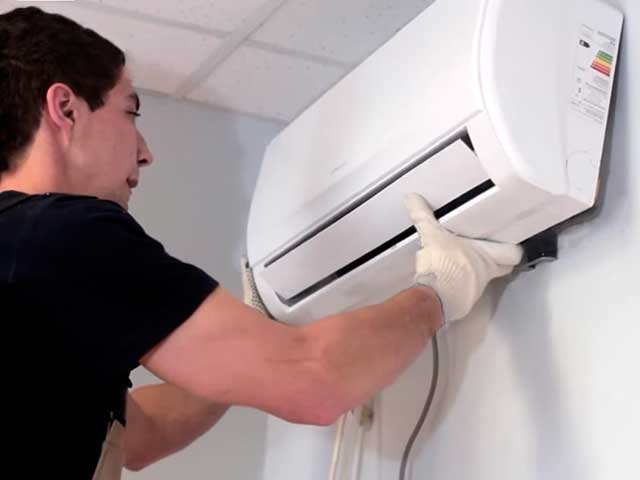

After a suitable model is selected, you should attend to the installation of a split system in the apartment. The installation of household air conditioners is quite difficult, therefore better to hire professional installers... Incorrect installation threatens many problems in the operation of the air conditioner: reduced service life, constant breakdowns, condensate "leaks" and so on.

